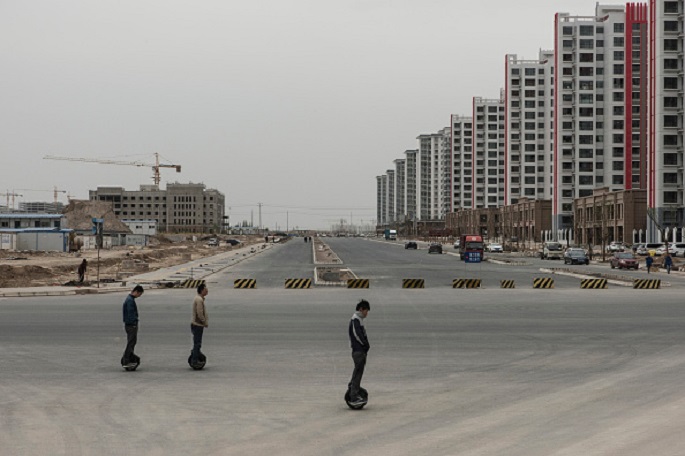Where on earth can one see the Great Sphinx and the Parthenon in one place resting near each other?
The life-size replicas of these two iconic landmarks share each other’s company in Lanzhou New Area, a 315-square-mile city in Gansu Province.
The extreme popularity of these two ancient structures may possibly drive throngs of tourists to flock this state-level development zone in the northwestern region of the country even if these people will only see mere models, but alas, these structures exist in solitary state in a vast area that appears like a wasteland.
Lanzhou New Area gives the impression of being “a ghost city in the making,” according to The Washington Post.
Rows of high-rise apartment buildings barely show signs of inhabitance. Long stretches of roads display no human activities. Five, 10 persons--possibly even fewer--may sometimes find the streets almost all by themselves.
Ambitious Project, Bold Predictions
The State Council approved on Aug. 20, 2012 to make Lanzhou, Gansu’s capital, as the fifth state-level development zone in the country, reported China Daily.
Qin Yucai, director of the Department of Western Regions Development of the National Development and Reform Commission, said during a news conference in Beijing on Sept. 7, 2012 that the government aimed “to accelerate development of the western regions” by establishing the Lanzhou New Area.
Qin added that it’s part of the country’s “economic restructuring efforts.”
By Sept. 2012, infrastructure projects already amounted to 24.6 billion yuan, according to Liu Weiping, Gansu’s former governor (July 2010-April 2016).
On that same month, the number of probable investment projects, some coming from the top 500 companies in the country, reached 90, with an estimated total worth of 70.7 billion yuan.
Yan Yonghong, a project manager at the Lanzhou-based GanSu Construction Investment (Holdings) Group, said that they targeted to build 44 high-rise residential buildings by 2013.
Liu said that by 2015, Lanzhou New Area’s gross domestic product would register at 50 billion yuan, and by 2020, more than 500,000 residents would dwell in the city. He added that the GDP would likely balloon to 270 billion yuan by 2030.
Fast-forward to 2016
After leveling hundreds of hills, demolishing houses, replacing farmlands with asphalt and concrete and pouring in billions of yuan to take on large-scale infrastructure projects, Lanzhou New Area hardly shows a sign of the envisioned thriving community in a bustling modern metropolis.
As of the second half of January, a Forbes report states that “mountains are toppled and ravines are raised up” in the New Zone, and such served as indications that infrastructure projects continue.
According to Xu Dawu, the New Zone’s deputy Communist Party secretary, 150,000 people and 40,000 temporary construction workers reside in the city, reported The Washington Post.
Xu said that in case economic plans set will not succeed, one alternative could be to develop “modern agriculture.”
Recent reports, however, point to a positive turn of events for the New Zone.
From January to April, according to the Lanzhou Municipal Development and Reform Commission, the city saw 111 main projects completed, reported China.org.
In a new effort to promote the city, local officials will organize the First Lanzhou International Marathon Sports Goods Fair at the Gansu International Conference and Exhibition Center, which boasts of a 10,000-square-meter exhibition area, on June 2-5.
The city will similarly host the Lanzhou Sports Industry Summit Forum as a side activity during the said event.



























